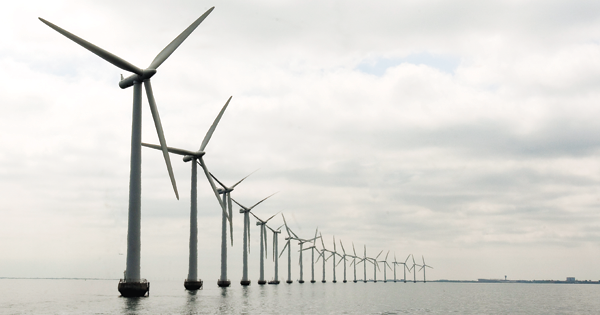A powerful force: renewable energy’s role in Ireland’s green economy
Stephen Dineen sums up the sector’s current contribution and its potential to drive future economic growth.
The phrase ‘green economy’ has become commonplace in our economic lexicon. The number of Irish environmental companies and the island’s renewable energy sector have grown significantly in recent years. They are now seen as a key driver of future economic growth.
A Forfás report on the green economy, published this year, stated that employment in the sector in the Republic as of November 2010 stood at 18,750 (to put it in context the ICT sector has approximately 70,000 employees), and is projected to rise to either 23,350 or 29,000 by the end of 2015, using two different projections.
The green economy is seen as having six sub-sections: energy efficiency and management; waste management and recovery; green ICT; environmental consultancy services; water and wastewater treatment services; and renewable energy.
The renewable energy component in Ireland’s fuel use continues to grow, with the SEAI’s 2010 energy report stating that consumption of renewable energy grew by 14.4 per cent in 2009. Renewables constituted 4.9 per cent of gross final energy use and 14.1 per cent of gross electricity consumption in the same year.
Wind is Ireland’s largest source of renewable energy, and the country is seen as having prime conditions for generating wind and tidal power. The Irish Wind Energy Association, for example, stated that there is the potential to create 16,000 new jobs in the sector by 2020. In 2009 private sector investment in wind energy was approximately €400 million. As well as the various sources of renewable energy, the sector also includes products, systems and services for generation and collection of such energies.
Targets and ambitions set by both the Irish Government and the previous administration express confidence that the renewable energy sector will continue to grow in the coming years. The Government has a target of 40 per cent of electricity to be sourced from renewables by 2020. Furthermore the Programme for Government states: “We will seek to establish Ireland as a renewable manufacturing hub to attract international and domestic investment.”
The importance of renewable energy in the years ahead is underlined by EU targets. Greenhouse gas emissions must be reduced by 20 per cent (from baseline 1990 levels) by 2020. 16 per cent of Ireland’s total energy consumption is to come from renewables, and 10 per cent of transport consumption and 12 per cent of heat consumption from sustainable sources by the same year.
With renewable energy generation having grown by 15 per cent per annum (28 per cent per annum of which was from wind energy) for the five years up to 2009, the latest SEAI energy forecast contains two scenarios for the coming nine years. Under its baseline scenario, 8.2 per cent of overall energy consumption will come from renewable sources. Alternatively, the National Energy Efficiency Action Plan and National Renewable Energy Action Plan scenario, which assumes national targets will be met, predicts renewable energy will account for 50 per cent of electricity and 18.3 per cent of total energy use.
Two companies typify the changing emphasis in Ireland’s energy demand. In its strategic framework to 2020 (published in 2008) the ESB, which showed a €339 million operating profit for 2010, aims to invest approximately half of its total €22 billion investment in renewables, aiming to deliver over 1,400 MW of electricity (one-third of its electricity generation) from such sources. Airtricity, which has invested €1 billion in Irish renewables, sourcing 500MW of renewable energy, announced the creation of a further 105 full-time jobs last October, bringing its total workforce on the island to over 930.
Difficulties remain in the form of a backlog of foreshore licence applications, barriers to micro-generation, public acceptance of grid development and perceived over- generous on-shore wind supports, highlighted by the ESRI’s Professor John FitzGerald in a recent review of Irish energy policy.
The next few years will be crucial for the renewable energy sector. The Forfás report states that progress has been made lately in investing in the grid and by building an East-West interconnector, providing incentives for farmers to produce renewable energy, the development of regional sustainable energy action plans and lowering the capacity threshold for wind farms under the planning laws. With immediate action on removing the remaining barriers, the report claims, the employment target of 29,000 green sector jobs could be reached, with renewable energy playing a significant role within that growth.






